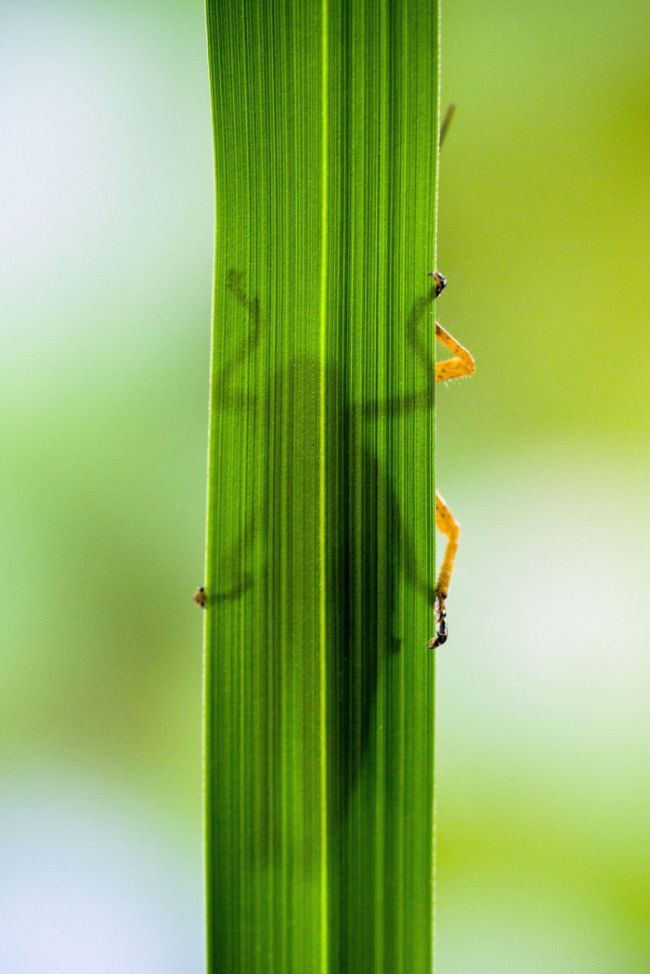|
|
Grasshopper Eating A Plant
|
Grasshoppers prefer to eat grasses, leaves and cereal crops, but many grasshoppers are omnivorous. The majority of grasshoppers are polyphagous. Many will eat from multiple host plants in one day, while some prefer to rely on the same host plant. Only one of the 8000 species of grasshopper is monophagous and will only eat a single species of plant.
The digestive system of insects includes a foregut (stomodaeum, the mouth region), a midgut (mesenteron), and a hindgut (proctodaeum, the anal region). The mouth is distinct due to the presence of a mandible and salivary glands. The mandible can chew food very slightly and start mechanical digestion. Salivary glands (occur in buccal cavity) chemically digest the carbohydrates in the grasses and similar foods they eat. The buccal cavity continues with pharynx, esophagus and crop. The crop has the ability to hold food. From the crop, food enters the gizzard, which has tooth-like features in it. From there, food enters the stomach. In the stomach, digestive enzymes mix with the food to break it down. These enzymes originate from the gastric caeca surrounding the stomach. This leads to the malpighian tubules. These are the chief excretion organs. The hindgut includes intestine parts (including the ileum and rectum), and exits through the anus. Most food is handled in the midgut, but some food residue as well as waste products from the malpighian tubules are managed in the hindgut. These waste products consist mainly of uric acid, urea and amino acids, and are normally converted into dry pellets before being disposed.
The salivary glands and midgut secrete digestive enzymes. The midgut secretes protease, lipase, amylase, and invertase, among other enzymes. The particular ones secreted vary with the different diets of grasshoppers.
|
|









